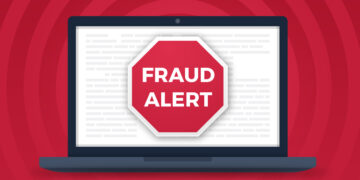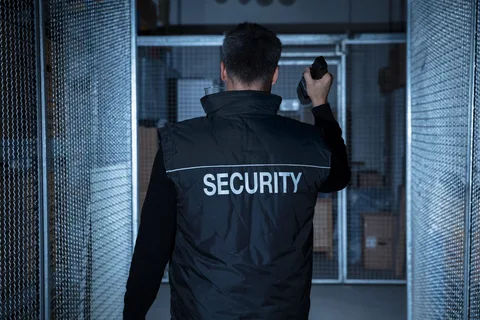Whether you are a newly employed Security services or have been in the industry for years, there are certain things that you should know. You should understand that the way that you approach your job will have an effect on the quality of your work and your job satisfaction.

Tactical communication
Using communication skills, security guards can defuse disputes and reduce physical confrontations.
Effective communication is a difficult skill to learn. Many people have natural skills, but it’s important to practice and improve.
Tactical communication involves understanding the situation and leading others to the desired outcome. This technique is important in every type of situation.
There are four basic parts to tactical communication. These include posture, tone, verbal communication, and non-verbal communication.
Posturing is the body positioning of the guard. Non-verbal communication is important in rapport building. This includes facial expressions and stances.
Tactical communication in security guards training is essential for a successful interaction.
The Tactical Communication for Law Enforcement and Security course is the ultimate guide to conflict resolution. This course teaches core skills such as representation, translation, and mediation. This course also gives an in-depth study of communication models and tools.
A security guard’s job is not easy. They may face violent people, off-topic conversations, and deception. They must maintain composure and act professionally under all circumstances. In addition, they must learn how to communicate with coworkers and clients.
The ultimate goal of security professionals is to protect and enforce policies and bylaws. But they must also be able to quickly assess and deescalate aggressive situations. They need to be able to make the right decision in a situation that’s rapidly changing.
The Tactical Communication for Security course is part of ProSec: Professional Security Training series.
Observation and reporting
Observation and reporting during security guards training is a crucial component of the job. The guards must be able to identify suspicious activities and report them to the appropriate authorities.
While observing and reporting may seem like a no-brainer, it is not always a simple task. The situation may be too overwhelming to handle on their own. The guards will need to assess the situation and decide whether they need to report the incident or take action.
While there are different types of security reporting, the Daily Activity Report is usually the most common. This report will contain basic patrol details as well as maintenance issues. Typically, the report will include information on parking violations, resident contacts and lock-up and unlock services.
The Daily Activity Report is a useful first-hand account of what security officers do on a daily basis.
Observing and reporting during security guards training has become a more important component of the security industry in recent years.
Observation of people who may be a threat
Observing people and their behavior is an art in itself. To be a good event security guard you have to take the time to learn what they are doing and what they aren’t. To make this task easier many companies offer training programs. A good program will also cover the obvious such as the basics of self defense and the proper protocol for addressing an assault.
A well trained security guard will be able to keep detailed records of their actions. This will not only make them safer but also better equipped to meet the needs of their employers. It is also important to learn what to do when things go awry. A good security guard should never be afraid to call the authorities if they are in need.
A good guard will also be well informed about the latest security technologies and trends. This will help them make better informed decisions. Some companies use a program called the ‘detect, deter, observe and report’ scheme. This involves identifying signs of trespassing and a plethora of other activities.
The ‘detect, deter, and observe’ scheme can also be implemented in a mobile fashion, where a security guard can go from place to place to perform his or her duty. Keeping the proper protocol for dealing with offenders is a good idea. A security guard should also be aware of how to best deal with an assault and learn to read body language.
A good guard is also able to perform a number of other duties, such as directing traffic, and providing first aid. Having the best tools at their disposal is just as important as knowing how to use them.

Integrating with staff and other security personnel
During your security guards training regimen, it’s a good idea to enlist the aid of the local law enforcement agency and see how they might help your team of guards and volunteers. While you’re at it, make sure they’re familiar with your organization’s mission statement, philosophies, and protocols. If they’re not, they might not be up to the task.
In addition, you’ll want to make sure your guards and volunteers are well stocked with the requisite security equipment. This includes everything from two-way radios to a first aid kit. You might even want to consider investing in some state-of-the-art security technology. This includes alarm systems, video surveillance, and access control systems. You might want to consider hiring a professional security firm, such as GardaWorld, to oversee your security needs.
Another tip is to consider the services of a mobile app that allows your officers to interact with robots. This is a good idea because it’s not uncommon to have an officer involved in an incident where he can’t respond in person. The aforementioned mobile app can also assist your guards with a number of other tasks, such as monitoring surveillance video or engaging in emergency calls.
Re-evaluating training
Getting a new security guards training program up and running can be a daunting task. However, with a little research and preparation, you can have a flourishing business. With the right training and training materials, you can equip your security officers with the knowledge they need to keep your property and people safe.
To start with, you should develop a professional vision statement that describes your company’s goals and means. This will help you determine the goals and objectives of your training program. You can also conduct interviews with your participants to collect more detailed information. You should include training on new surveillance technologies and tools of the trade.
During the course of the training, you should assess whether the materials used meet the company’s standards. You should also analyze the data collected to determine if the training program achieved the intended outcome. This evaluation can also help you determine which training techniques are most effective.
Another consideration is time periods. You should also think about how long it will take to adapt the training program.
The DDI’s report found that companies that have formalized training programs have higher operating income and profits. This is due to the fact that training improves productivity by 81%. It also helps your company’s guards to be more efficient. You should also consider the costs of training and the time it takes for the guards to learn new skills.
If you are not sure what training program to use, you can choose from a variety of training programs. You can select courses that cover the basics of security such as security risk management, emergency protocols, patient/customer service, and traffic control. You can also choose courses that specialize in certain areas of the industry, such as security for airports, hospitals, and bank branches.









